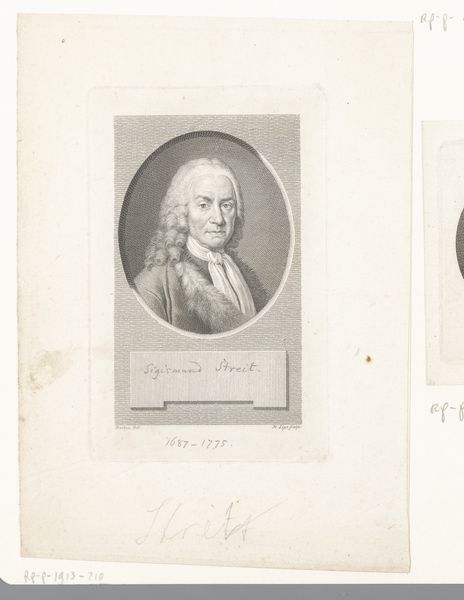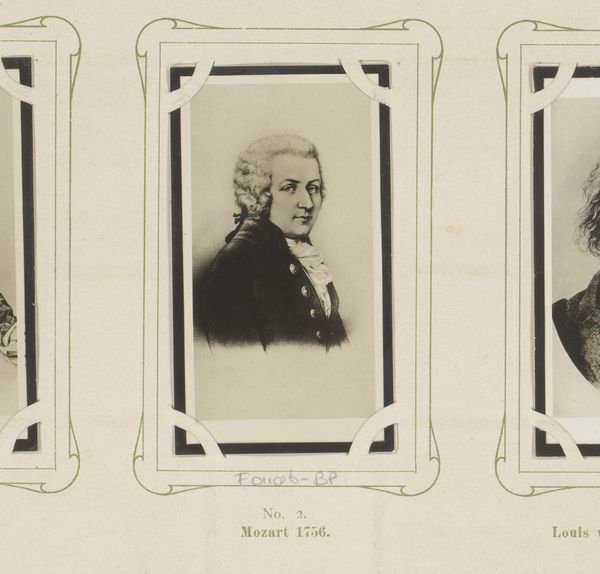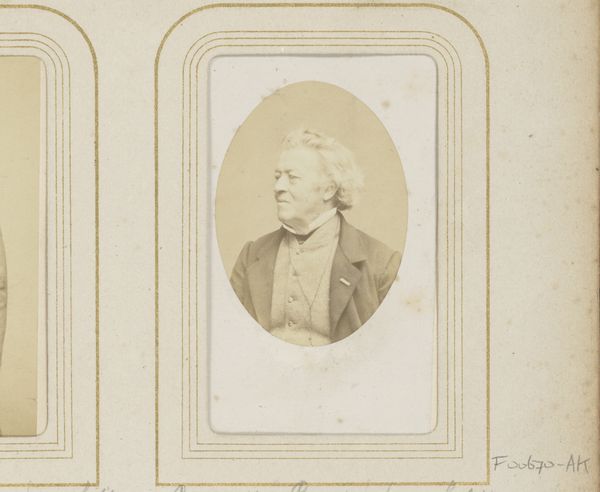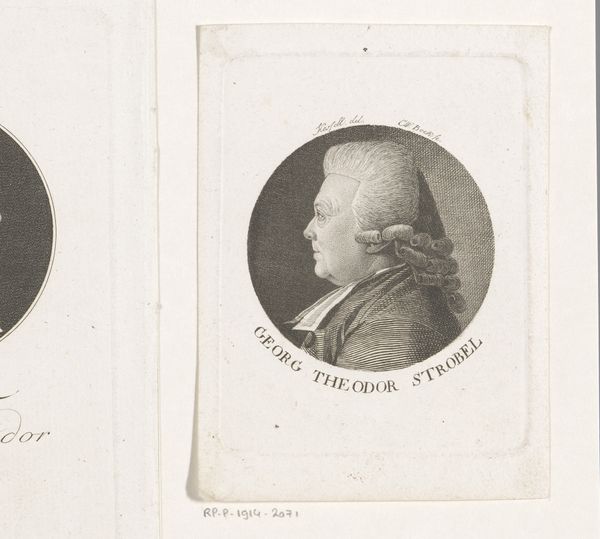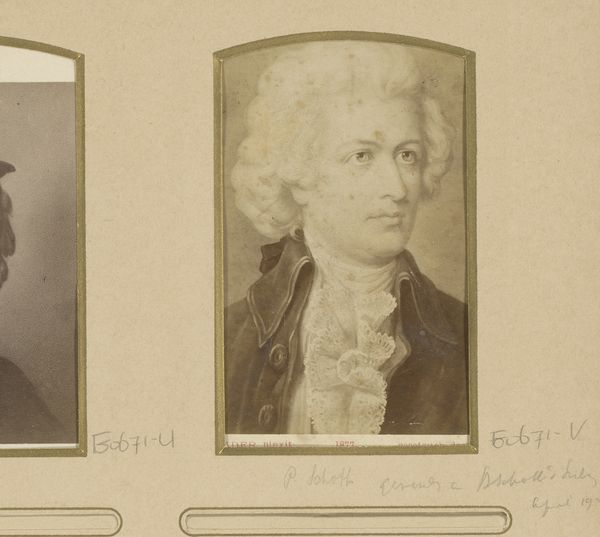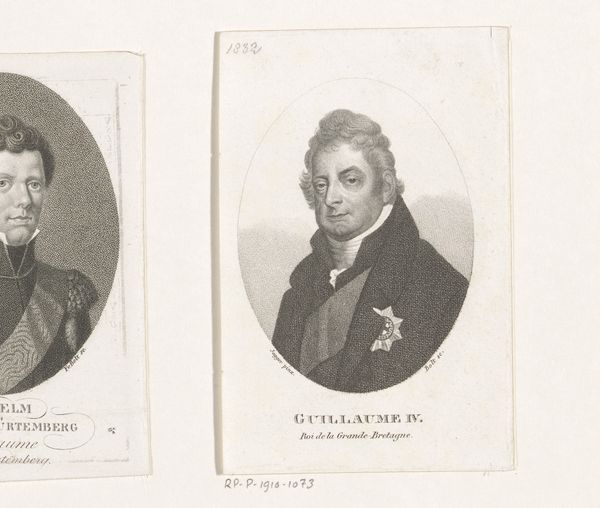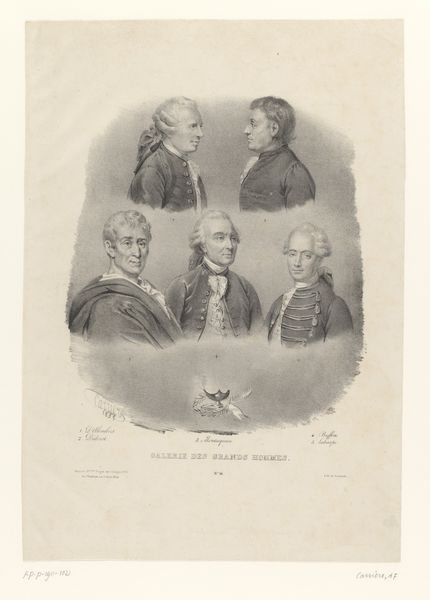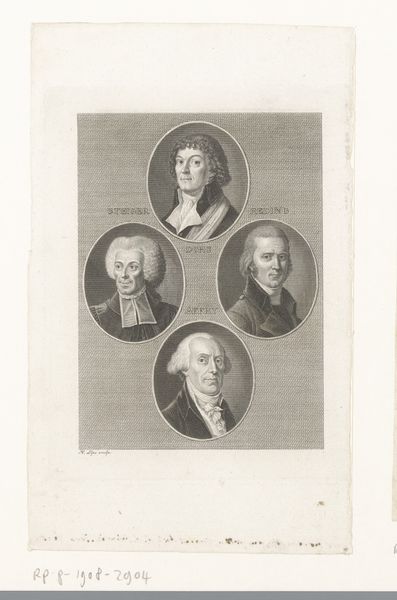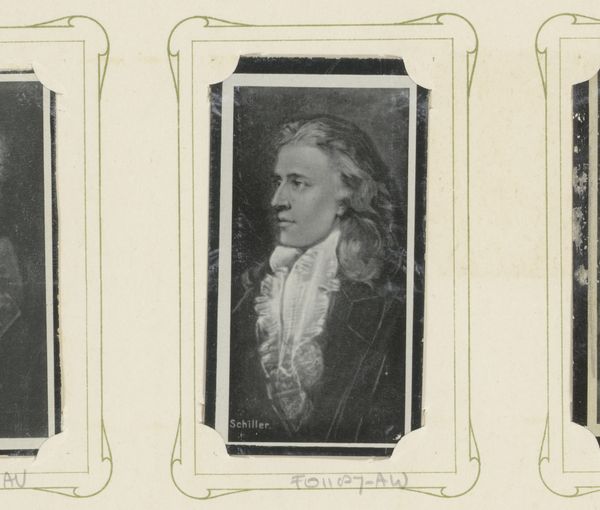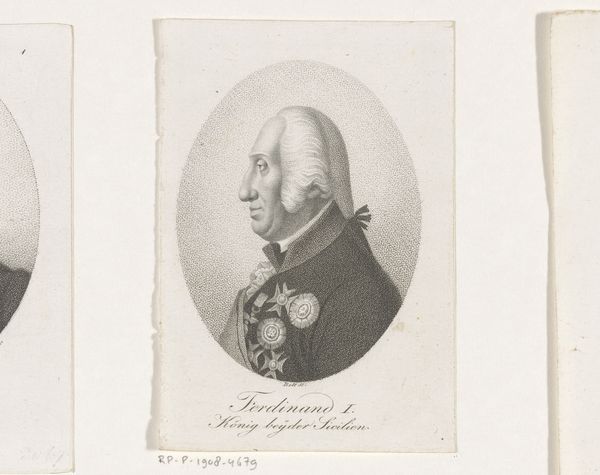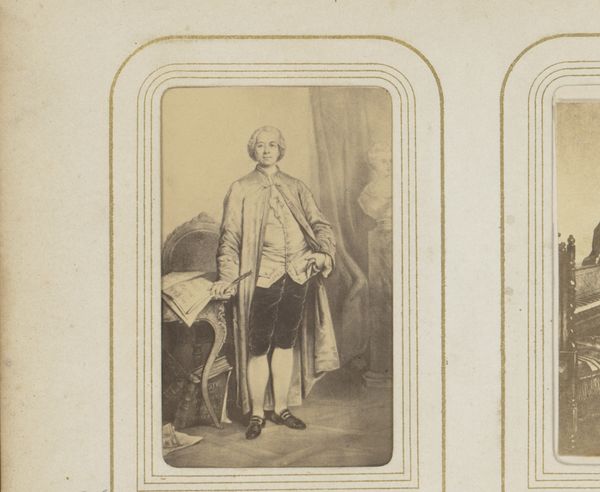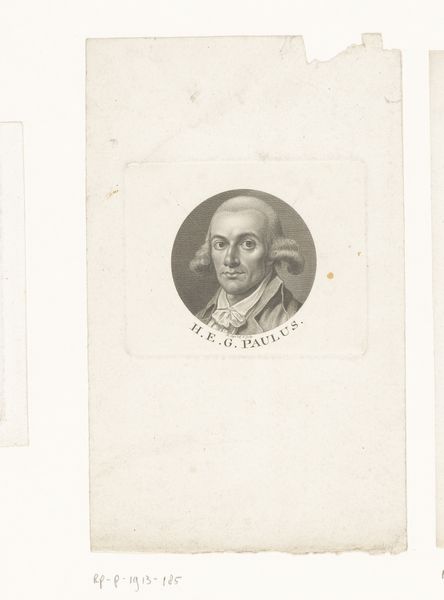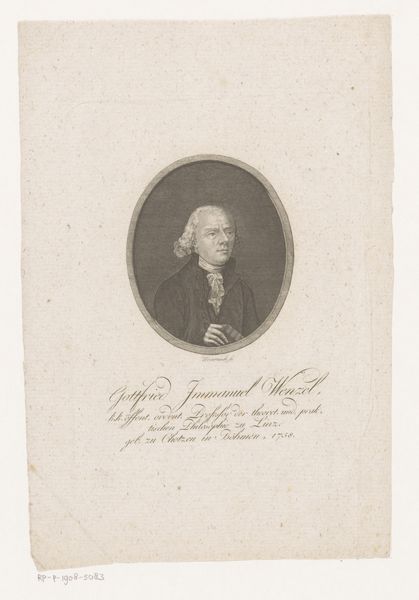
Dimensions: height 80 mm, width 45 mm
Copyright: Rijks Museum: Open Domain
Curator: Here we have a photographic reproduction of a painted portrait of Johann Sebastian Bach. This print, dating from between 1904 and 1905, revives the Neoclassical style in its rendering of the composer. Editor: It’s striking how staged and formal it feels, even reproduced as a photograph. There's an almost severe stoicism in Bach's expression; he looks like he is consciously enacting 'genius'. Curator: Precisely! Notice the wig, the tailored coat, the way he positions his hand just so. These aren’t simply period details. They signal a very specific kind of authority and status. The visual language is designed to convey genius. This "look" has echoed down through history. Editor: The printing medium makes me consider something. The printing of images such as these suggests something democratic and even propagandistic is at play here, an effort perhaps to enshrine him further in the pantheon of greats. There's this element of mass production of icons. How might a construction of his greatness have impacted how his music was later used politically? Curator: That’s a brilliant point. The choice of a historical painting style reinforces this idea of a classical ideal, one meant to be widely disseminated. The symbols of class are obvious; this image, by visually enshrining the image of Bach, speaks volumes about social hierarchy and the romantic view of musical 'masters'. Editor: Looking at Bach here, reproduced and framed, forces me to question who he's really 'for'. Is it about music, genius, and skill...or about power, class, and control? These images play with symbols in dangerous ways! Curator: Exactly. An image that’s seemingly simple on the surface turns out to hold complex cultural meanings related to status and control of information. The photo offers us insight into Bach's historical and cultural appropriation as an enduring, authoritative, iconic symbol. Editor: Absolutely, looking at what is celebrated, reproduced, and immortalized gives us an immediate clue into who controls a culture's symbolic vocabulary. This reminds me of why it’s vital that images always remain the objects of critical analysis.
Comments
No comments
Be the first to comment and join the conversation on the ultimate creative platform.
